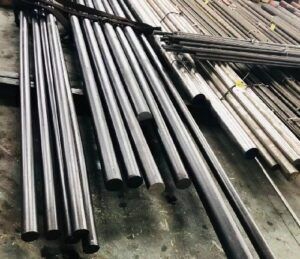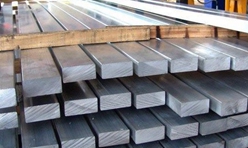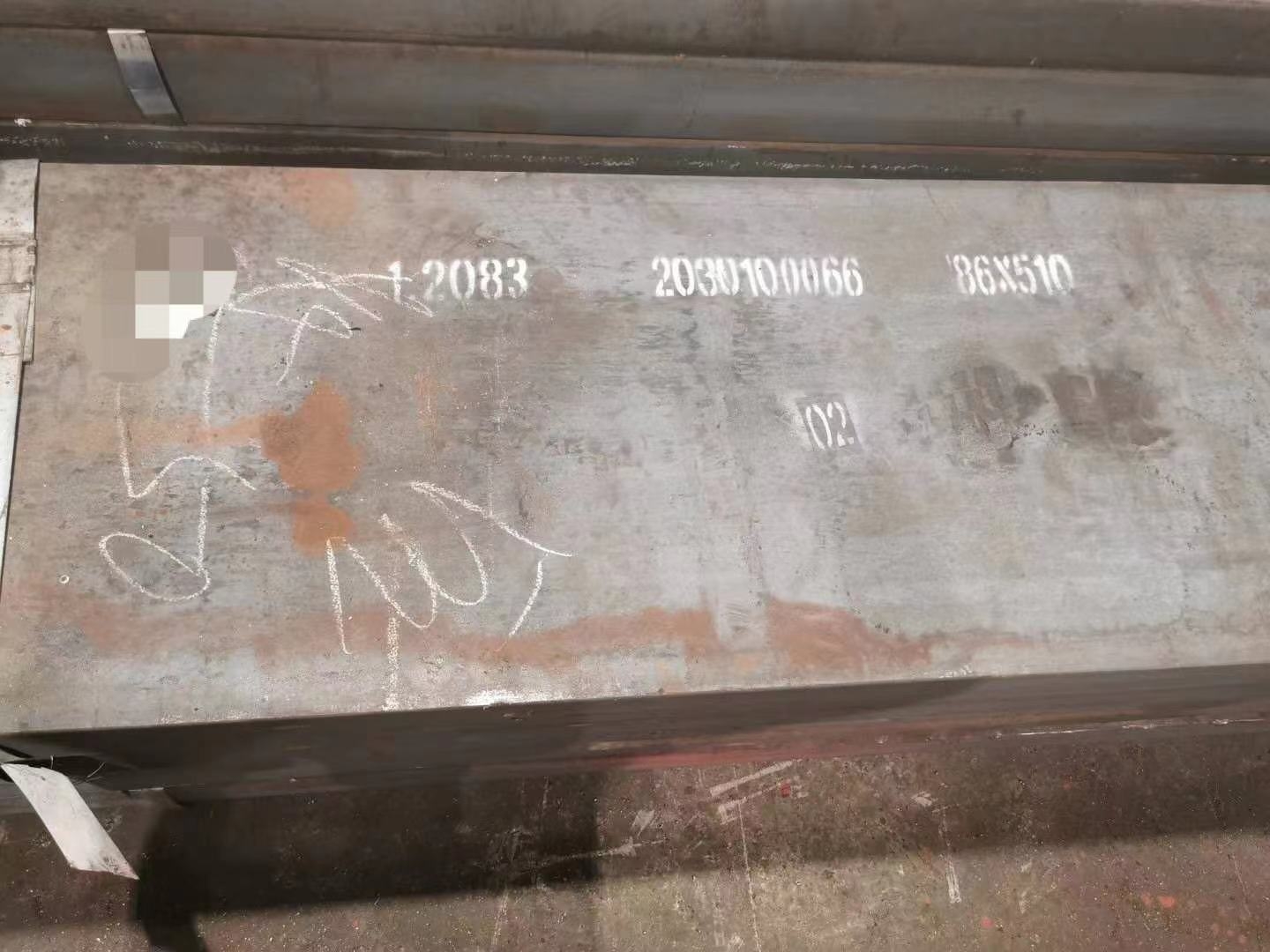AISI 321 Stainless Steel
aisi 321
Overview
Grade 321 stainless steel (1.4541) is a heat resistant grade supplied into numerous industry sectors. The key property of this grade is the added titanium content (5 x C%) stabilising the material and making its resistance to carbide precipitation when exposed to high temperatures and resistance to oxidation its main characteristics. Whilst retaining good strength and corrosion resistance when exposed to high temperatures, this grade of stainless steel like most austenitic grades will also maintain its strength and toughness at sub-zero temperatures, making this an excellent choice for various applications ranging from oil refinery equipment to automotive exhaust systems. This heat resistant grade of stainless steel has a maximum dry air service temperature of 850ºC.
Form of Supply
| * Sheet | * Plate | * Round Bar | * Wire | * Tube & Pipe |
Grade 321 is the grade of choice for applications in the temperature range of up to about 900 °C, combining high strength, resistance to scaling and phase stability with resistance to subsequent aqueous corrosion.
Grade 321H is a modification of 321 with higher carbon content, to provide improved high-temperature strength.
A limitation with 321 is that titanium does not transfer well across a high-temperature arc, so it is not recommended as a welding consumable. In this case grade 347 is preferred – the niobium performs the same carbide stabilization task but can be transferred across a welding arc. Grade 347 is, therefore, the standard consumable for welding 321. Grade 347 is only occasionally used as parent plate material.
Like other austenitic grades, 321 and 347 have excellent forming and welding characteristics, are readily brake or roll-formed and have outstanding welding characteristics. Post-weld annealing is not required. They also have excellent toughness, even down to cryogenic temperatures. Grade 321 does not polish well, so is not recommended for decorative applications.
Grade 304L is more readily available in most product forms, and so is generally used in preference to 321 if the requirement is simply for resistance to intergranular corrosion after welding. However, 304L has lower hot strength than 321 and so is not the best choice if the requirement is resistance to an operating environment over about 500 °C.
321 is a titanium stabilised chromium-nickel austenitic stainless steel with good strength and excellent corrosion resistance, as supplied in the annealed condition with a typical brinell hardness of 175.Characterised by high corrosion resistance in general atmospheric corrosive environments it exhibits excellent resistance to most oxidizing agents, general foodstuffs, sterilizing solutions, dyestuffs, most organic chemicals plus a wide variety of inorganic chemicals, also hot petroleum gases, steam combustion gases, nitric acid, and to a lesser extent sulphuric acid. It displays good oxidation resistance at elevated temperatures has excellent resistance to intergranular corrosion and has excellent weldability. 321 cannot be hardened by thermal treatment, but strength and hardness can be increased substantially by cold working, with subsequent reduction in ductility.
Used extensively for applications where the addition of titanium and its stabilizing effect as a carbide forming element allows it to be welded and/or used within the carbide precipitation range 430oC – 870oC without the risk of intergranular corrosion. These include Food Processing, Dairy Equipment, Chemical, Petrochemical, Transport and associated industries etc.
Smelting Option
1 EAF: Electric Arc Furnace
2 EAF+LF+VD: Refined-smelting and vacuum degassing
3 EAF+ESR: Electro Slag Remelting
4 EAF+PESR: protective atmosphere Electro Slag Remelting
5 VIM+PESR: Vacuum induction melting
Forming Option
1 Hot rolling process
2 Hot Forging: Electro-hydraulic; High-speed-hydraulic; Oil-hydraulic; Precision-forging
Heat-treatment Option
1 +A: Annealed (full/soft/spheroidizing)
2 +N: Normalized
3 +NT: Normalized and tempered
4 +QT: Quenched and tempered (water/oil)
5 +AT: Solution annealed
6 +P: Precipitation hardened
Suface Option
1 Black Surface
2 Grounded: Bright but rough ; Not precision
3 Machining for plate: Bright and precision; Little turning scar
4 Peeled/Turned: Bright and precision; Little turning scar
5 Polished: Very Bright and precision size; Not turning scar
Other Services
1 Cutting: Small pieces
2 CNC Machine: Produce as your drawing
3 Package: Bare/Nylon/Canvas/Wooden
4 Payment:T/T, L/C, O/A(request credit)
5 Transport:FOB/CFR/CIF/DDU/DDP (train/ship/Air)
Key Properties
These properties are specified for the flat-rolled products (plate, sheet, and coil) in ASTM A240/A240M. Similar but not necessarily identical properties are specified for other products such as pipe and bar in their respective specifications.
Composition
Typical compositional ranges for grade 321 stainless sheets of steel are given in table 1.
Table 1. Composition ranges for 321-grade stainless steel
| Grade | C | Mn | Si | P | S | Cr | Mo | Ni | N | Other | |
| 321 | min. max | – 0.08 | 2.00 | 0.75 | 0.045 | 0.030 | 17.0 19.0 | – | 9.0 12.0 | 0.10 | Ti=5(C+N) 0.70 |
| 321H | min. max | 0.04 0.10 | 2.00 | 0.75 | 0.045 | 0.030 | 17.0 19.0 | – | 9.0 12.0 | – | Ti=4(C+N) 0.70 |
| 347 | min. max | 0.08 | 2.00 | 0.75 | 0.045 | 0.030 | 17.0 19.0 | – | 9.0 13.0 | – | Nb=10(C+N) 1.0 |
Mechanical Properties
Typical mechanical properties for grade 321 stainless sheets of steel are given in table 2.
Table 2. Mechanical properties of 321-grade stainless steel
| Grade | Tensile Strength (MPa) min | Yield Strength 0.2% Proof (MPa) min | Elongation (% in 50 mm) min | Hardness | |
| Rockwell B (HR B) max | Brinell (HB) max | ||||
| 321 | 515 | 205 | 40 | 95 | 217 |
| 321H | 515 | 205 | 40 | 95 | 217 |
| 347 | 515 | 205 | 40 | 92 | 201 |
Physical Properties
Typical physical properties for annealed grade 321 stainless sheets of steel are given in table 3.
Table 3. Physical properties of 321-grade stainless steel in the annealed condition
| Grade | Density (kg/m3) | Elastic Modulus (GPa) | Mean Coefficient of Thermal Expansion (μm/m/°C) | Thermal Conductivity (W/m.K) | Specific Heat 0-100 °C (J/kg.K) | Electrical Resistivity (nΩ.m) | |||
| 0-100 °C | 0-315 °C | 0-538 °C | at 100 °C | at 500 °C | |||||
| 321 | 8027 | 193 | 16.6 | 17.2 | 18.6 | 16.1 | 22.2 | 500 | 720 |
Grade Specification Comparison
Approximate grade comparisons for 321 stainless sheets of steel are given in table 4.
Table 4. Grade specifications for 321-grade stainless steel
| Grade | UNS No | Old British | Euronorm | Swedish SS | Japanese JIS | ||
| BS | En | No | Name | ||||
| 321 | S32100 | 321S31 | 58B, 58C | 1.4541 | X6CrNiTi18-10 | 2337 | SUS 321 |
| 321H | S32109 | 321S51 | – | 1.4878 | X10CrNiTi18-10 | – | SUS 321H |
| 347 | S34700 | 347S31 | 58G | 1.4550 | X6CrNiNb18-10 | 2338 | SUS 347 |
Possible Alternative Grades
Possible alternative grades to grade 321 stainless sheets of steel are given in table 5.
Table 5. Possible alternative grades to 321-grade stainless steel
| Grade | Why it might be chosen instead of 321 |
| 304L | The requirement is for resistance to intergranular corrosion, not for high-temperature strength |
| 3CR12 | Only a mild “high temperature” environment is present… up to about 600 °C. |
| 304H | Only a mild “high temperature” environment is present… up to about 800 °C. |
| 310 | The temperature of the operating environment is up to about 1100 °C – too high for 321 or 321H. |
| S30815 (253MA) | The temperature of the operating environment is up to about 1150 °C- too high for 321 or 321H. |
Corrosion Resistance
Equivalent to Grade 304 in the annealed condition, and superior if a weldment in these grades has not been post-weld annealed or if the application involves service in the 425-900 °C range. Subject to pitting and crevice corrosion in warm chloride environments, and to stress corrosion cracking above about 60 °C. Considered resistant to potable water with up to about 200 mg/L chlorides at ambient temperatures, reducing to about 150 mg/L at 60 °C.
Heat Resistance
Good oxidation resistance in intermittent service to 900 °C and in continuous service to 925 °C. These grades perform well in the 425-900 °C range, and particularly where subsequent aqueous corrosive conditions are present. 321H has higher hot strength and is particularly suitable for high-temperature structural applications.
Heat Treatment
Solution Treatment (Annealing) – heat to 950-1120 °C and cool rapidly for maximum corrosion resistance.
Stabilizing – heat to 870-900 °C for 1 hour per 25mm of thickness and air cool. Stabilization is recommended for most severe service conditions (above 425 °C) and particularly for material annealed at the upper side of the annealing temperature range.
Stress Relief – Heat to 700 °C for 1 to 2 hours and air cool.
These grades cannot be hardened by thermal treatment.
Welding
Excellent weldability by all standard fusion methods, both with and without filler metals. AS 1554.6 pre-qualifies welding of 321 and 347 with Grade 347 rods or electrodes; a high silicon version of 347 is also pre-qualified for welding of 321.
Applications
Typical applications include:
Aircraft exhaust manifolds
Expansion joints
Bellows
Furnace parts
Heating element tubing
Heat Exchangers
Woven or welded screens for high-temperature mineral processing
Spiral Welded tube for burner pipes and flues
| Properties (MPa) | Temperatures | ||||||||||
| 600℃ | 700℃ | 800℃ | |||||||||
| Creep limit | R1/1000 | 110 | 45 | 15 | |||||||
| R1/10000 | 85 | 30 | 10 | ||||||||
| Creep resistance | Rz/1000 | 200 | 88 | 30 | |||||||
| Rz/10000 | 142 | 48 | 15 | ||||||||
| Rz/100000 | 65 | 22 | 10 | ||||||||
| Temperature T °C/F (°C/F) | Specific heat J / kgK (Btu / lb °F) | Thermal conductivity W/mK (Btu·in / ft2·h·°F) | Electric resistance µΩ · cm (Ω circ mill / ft) | Modulus of elasticity kN/mm2 (103 ksi) | Expansion rate from 70°F bis T 10-6 / K (10-6 / °F) | ||||||
| 20 / 68 | 500 (-) | 15 (-) | 0,73 (-) | 200 (-) | 16,0 (-) | ||||||
| 200 /392 | 186 (-) | 16,5 (-) | |||||||||
| 300 / 572 | 179 (-) | 17,0 (-) | |||||||||
| 400 / 752 | 172 (-) | 17,5 (-) | |||||||||
| 500 / 932 | 165 (-) | 18,0 (-) | |||||||||
| temperature | 0,2%Yield strength in high temperatures | 1,0% Yield strength in high temperatures |
| °C / °F | Rp 0,2 | Rp 1,0 |
| N/mm2 /ksi | N/mm2 /ksi | |
| 100 / 212 | 176 / 25,50 | 208 / 30,16 |
| 200 / 392 | 157 / 22,77 | 186 / 30,00 |
| 300 / 572 | 136 / 19,70 | 167 / 24,20 |
| 400 / 752 | 125 / 18,10 | 156 / 22,60 |
| 500 / 932 | 119 / 17,00 | 149 / 21,60 |
| ksi value calculated | ||
Mechanical properties (20°C / 68°F)
| 1% Yield strength Rp1,0 (Mpa / ksi) | 240 / 34,8 |
| Tensile strength Rm (Mpa/ksi) | 500-700 |
| Elongation A5 (%) | 40 |
| impact work ISO-V | 60 J |
Temparature information
| Application area | |
| Operation temperature | ºF to 1652 ºF |
| Explanation report | air |
| Solution heat treatment | |
| Working temperature | 1886 ºF to 2030 ºF |
| Processing informations | cool down: water;air |
| Annealing | |
| Working temperature | 1832 ºF to 2012 ºF |
| Explanation report | duration 5 min; width 5 mm |
| Processing informations | cool down: water;air |
| Solution heat treatment | |
| Working temperature | 2102 ºF to 1562 ºF |
| Processing informations | cool down: air |
Standards / information
| Standards | Desciption |
| ASTM A 182 | Standard Specification for Forged or Rolled Alloy-Steel Pipe Flanges,Forged Fittings and Valves and Parts for High-Temperature Service |
| ASTM A 213 | Standard Specification for Seamless Ferritic and Austenitic Alloy-Steel Boiler,Superheater,and Heat-Exchanger Tubes |
| ASTM A 240 | sheet metal and ribbons from stainless Cr and Ni pressure containers |
| ASTM A 249 | Standard Specification for Welded austenitic steel boiler, Superheaters, heat-exchangers,and condenser Tubes |
alloy 321 is a general purpose austenitic stainless steel with a face centered cubic structure. It is essentially non-magnetic in the annealed condition and can only be hardened by cold working. Titanium is added to supress grain boundary Chromium Carbide precipitation and reduce susceptibilty to intergranular corrosion.
AISI 321 square bars hotrolled and pickled tolerance DIN EN 10059 ( formerly DIN 1014 ) long 4-6 mtr
Sizes:
| 25,00 mm | 45,00 mm | 65,00 mm | 85,00 mm | 135,00 mm | |
| 30,00 mm | 50,00 mm | 70,00 mm | 90,00 mm | 150,00 mm | |
| 35,00 mm | 55,00 mm | 75,00 mm | 100,00 mm | ||
| 40,00 mm | 60,00 mm | 80,00 mm | 120,00 mm |
1.4541 – AISI 321 hexagon bars hotrolled and pickled tolerance DIN EN 10059 ( formerly DIN 1014 ) long 4-6 mtr
Sizes:
| 41,00 mm | 85,00 mm | 100,00 mm |
| 80,00 mm | 90,00 mm |
AISI 321 hexagon bars brightdrawn tolerance h11 DIN EN 10278 ( formerly DIN 176 ) long 3 mtr
Improved machinability
Sizes:
| 6,00 mm | 15,00 mm | 30,00 mm | 60,00 mm |
| 8,00 mm | 16,00 mm | 32,00 mm | 65,00 mm |
| 9,00 mm | 17,00 mm | 34,00 mm | 70,00 mm |
| 10,00 mm | 18,00 mm | 36,00 mm | |
| 11,00 mm | 19,00 mm | 41,00 mm | |
| 12,00 mm | 22,00 mm | 46,00 mm | |
| 13,00 mm | 24,00 mm | 50,00 mm | |
| 14,00 mm | 27,00 mm | 55,00 mm |
AISI 321 round bar hotrolled / forged, peeled / turned acc. DIN EN 10060 ( formerly DIN 1013 ), long 4-6 mtr
Sizes:
| Ø 20,00 mm | Ø 42,00 mm | Ø 90,00 mm | Ø 145,00 mm | Ø 210,00 mm | Ø 310,00 mm | Ø 525,00 mm |
| Ø 22,00 mm | Ø 45,00 mm | Ø 95,00 mm | Ø 150,00 mm | Ø 220,00 mm | Ø 325,00 mm | |
| Ø 24,00 mm | Ø 50,00 mm | Ø 100,00 mm | Ø 155,00 mm | Ø 230,00 mm | Ø 340,00 mm | |
| Ø 25,00 mm | Ø 52,00 mm | Ø 105,00 mm | Ø 160,00 mm | Ø 240,00 mm | Ø 350,00 mm | |
| Ø 28,00 mm | Ø 55,00 mm | Ø 110,00 mm | Ø 165,00 mm | Ø 250,00 mm | Ø 360,00 mm | |
| Ø 30,00 mm | Ø 60,00 mm | Ø 115,00 mm | Ø 170,00 mm | Ø 260,00 mm | Ø 375,00 mm | |
| Ø 32,00 mm | Ø 65,00 mm | Ø 120,00 mm | Ø 175,00 mm | Ø 270,00 mm | Ø 400,00 mm | |
| Ø 35,00 mm | Ø 70,00 mm | Ø 125,00 mm | Ø 180,00 mm | Ø 275,00 mm | Ø 425,00 mm | |
| Ø 36,00 mm | Ø 75,00 mm | Ø 130,00 mm | Ø 185,00 mm | Ø 280,00 mm | Ø 450,00 mm | |
| Ø 38,00 mm | Ø 80,00 mm | Ø 135,00 mm | Ø 190,00 mm | Ø 290,00 mm | Ø 475,00 mm | |
| Ø 40,00 mm | Ø 85,00 mm | Ø 140,00 mm | Ø 200,00 mm | Ø 300,00 mm | Ø 500,00 mm |





